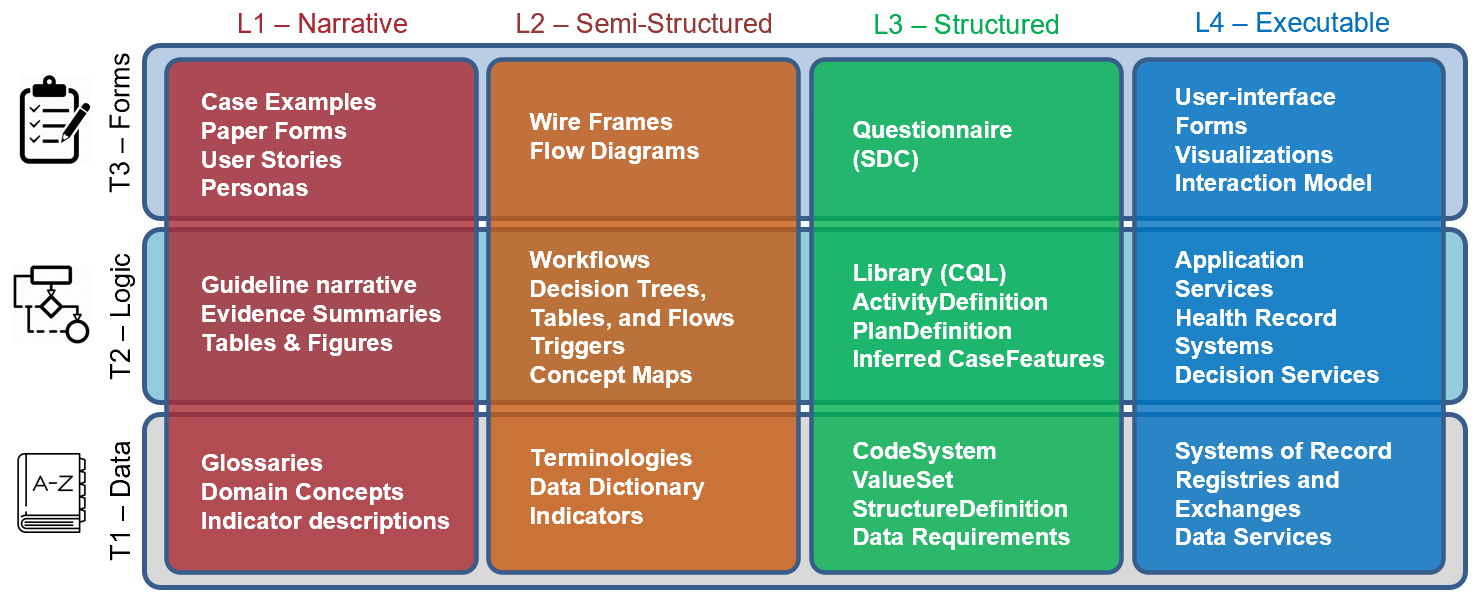This page is part of the Clinical Guidelines (v2.0.0: STU2) based on FHIR (HL7® FHIR® Standard) R4. This is the current published version. For a full list of available versions, see the Directory of published versions
A basic approach that may help with addressing appropriate separations of concerns is to consider where certain knowledge engineering artifacts may be situated when considering both tiers of functionality and levels of representation as shown in the table below.

Across the top are the knowledge levels, from narrative text (Level 1) on the left through successively more structured representations that end with running, executable software at the right (Level 4). At the bottom of the diagram, the data tier (T1) represents the concepts and data elements involved in the guideline. Above that, the logic tier (T2) represents the business and process rules of the guideline, and at the top, the forms or user-interface tier (T3) represents the user interactions with the guideline content Refer to Tiers of Functionality and Levels of Representation.
Note that the levels of knowledge representation are a continuum, with discrete categories introduced in the methodology to help inform discussions and communicate the concepts involved. Typically, the initial guideline content is published in narrative form (L1), but guidelines will often contain diagrams, charts, and other depictions that lean towards semi-structured (L2) representation.